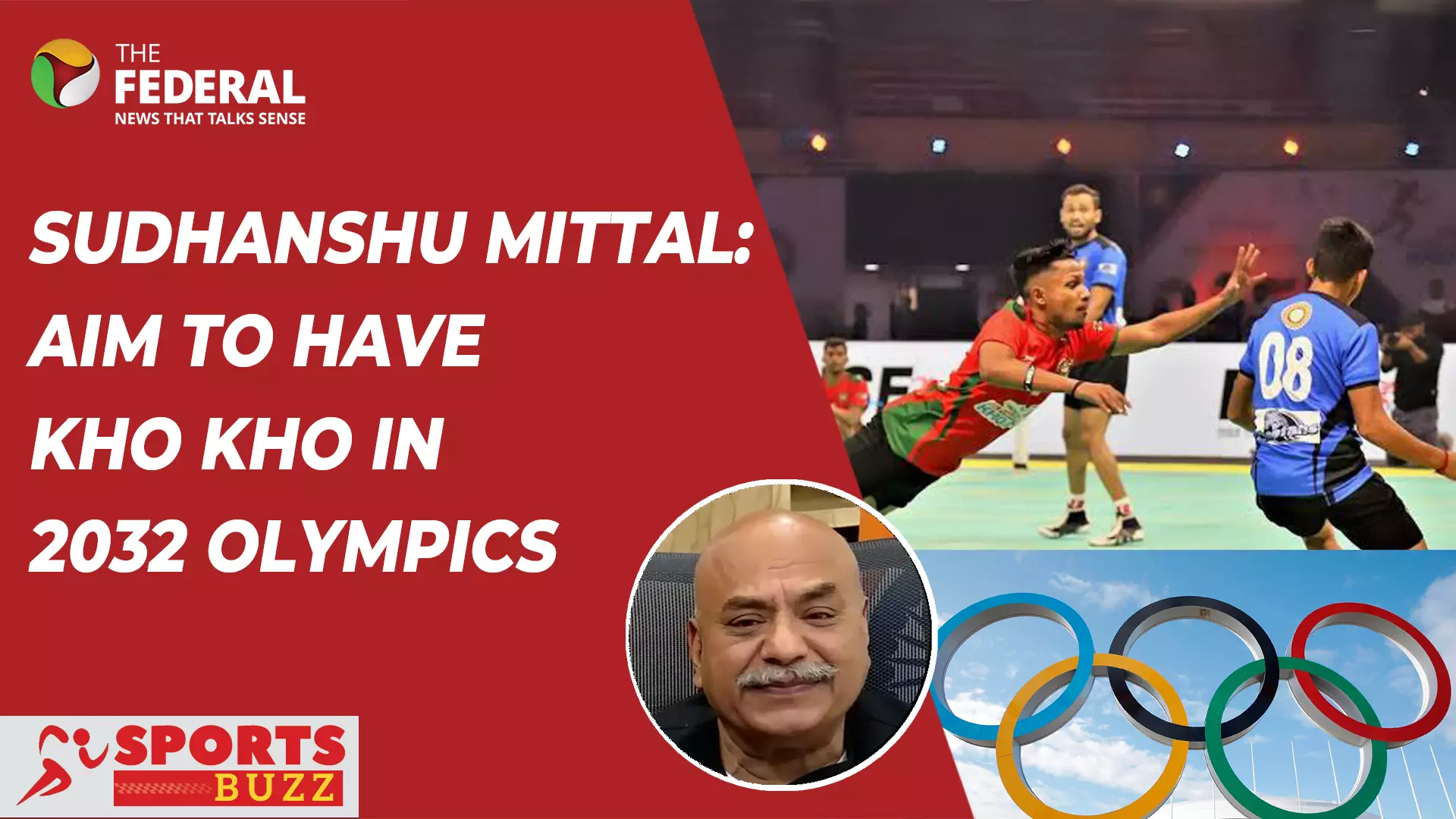
Kho Kho World Cup | Exclusive: 'Aim to have Kho Kho in 2032 Olympics'
India is set to host the first-ever Kho Kho World Cup 2025 at the Indira Gandhi Indoor Stadium in New Delhi from January 13 to 19

In a landmark event for Indian sports, the first-ever Kho Kho World Cup 2025 is set to take place at the Indira Gandhi Indoor Stadium, New Delhi, from January 13 to 19, 2025. Sudhanshu Mittal, President of the Kho Kho Federation of India (KKFI) and International Kho Kho Federation (IKKF), shared insights into this mega event during an interview on Sports Buzz. With 23 countries participating, this World Cup is a testament to the growing global popularity of India’s indigenous sport.
Global participation and challenges
Mittal highlighted the extensive international participation, with 20 teams in the men’s category and 19 in the women’s section. Countries like the United States, Argentina, Germany, and Australia will compete alongside traditional Kho Kho powerhouses like India, Bangladesh, and Sri Lanka.
However, Mittal expressed concerns over Pakistan’s delayed visa approval, leaving their participation uncertain. “I remain optimistic, but we’ll see what happens,” he said.
Kho Kho's global 'mitti to mat' journey and Olympic dream
Mittal emphasised the significance of the event for India: “Kho Kho has transitioned from mitti to mat and now to a global stage.” Once a demo sport at the 1936 Berlin Olympics, Kho Kho has re-emerged as a global phenomenon, played in 55 countries and aiming for 90 by year-end.
Also read: Indian teams for Kho Kho World Cup announced
“This is not just about the Indian diaspora. Native players in countries like Germany, Brazil, and Kenya are embracing the game because of its speed, agility, and minimal equipment requirements,” Mittal added. "The Federation is also working to include Kho Kho in the Asian Games by 2030 and the Olympics by 2032."
Modernising the game
To cater to an international audience, significant modifications have been made to the sport. “We reduced the court size for better television framing and reduced team sizes from nine to seven players,” Mittal explained. Innovations like shorter innings, fewer fouls, and the introduction of the Wazir concept — allowing a chaser to move in any direction — have made the game faster and more exciting.
The KKFI has also focused on player development, using sports sciences to improve physical and mental preparedness. “We’ve transformed raw talent into champions through tailored nutrition, psychology, and fitness regimens,” said Mittal.
National pride and celebrity support
Positioning Kho Kho as “Bharat ka Apna Khel,” the KKFI has garnered widespread support from celebrities like Sachin Tendulkar, Salman Khan, and Tiger Shroff, who have volunteered to promote the sport. “This goodwill reflects the deep connection Indians feel toward Kho Kho,” Mittal noted.
The game’s inclusion in government job quotas has further inspired young players. “Over 3,000 players have secured government jobs through sports quotas, creating new aspirations for future generations,” he added.
Team India’s chances
When asked about India’s chances of winning in both men's and women's sections, Mittal exuded confidence: “As the president of the International Kho Kho Federation, I cannot express bias, but as the president of the Kho Kho Federation of India, I firmly believe both trophies will be ours.”
He also emphasised gender equality in the tournament, with identical facilities and opportunities for men’s and women’s teams, calling it “a significant accomplishment.”
The road ahead
Looking beyond the World Cup, Mittal outlined a roadmap for future international tournaments. “Every two years, we will host either a World Cup or a World Championship. Continental events like the Asian, European, and African Cups will ensure continuous global engagement,” he explained.
With the inaugural World Cup poised to set new standards for the sport, Mittal remains optimistic about Kho Kho’s growing stature: “This is just the beginning of Kho Kho’s journey as a global sport.”
The content above has been generated using a fine-tuned AI model. To ensure accuracy, quality, and editorial integrity, we employ a Human-In-The-Loop (HITL) process. While AI assists in creating the initial draft, our experienced editorial team carefully reviews, edits, and refines the content before publication. At The Federal, we combine the efficiency of AI with the expertise of human editors to deliver reliable and insightful journalism.

